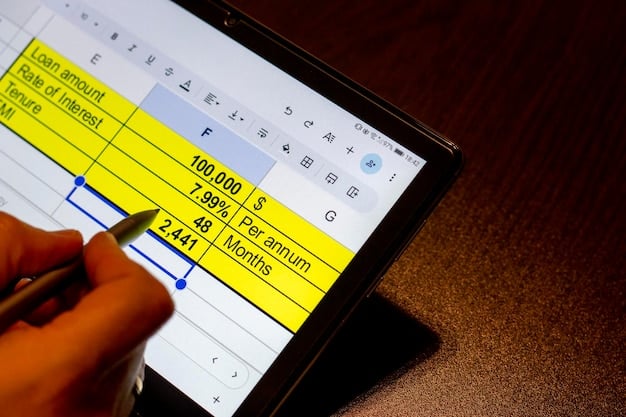How to Classify Imports Correctly: Avoid Penalties in the US


When you classify imports correctly, you’re not just avoiding penalties, you’re laying the foundation for a smarter, more profitable trade strategy.
Classification determines duty rates, compliance status, and even eligibility for trade agreements. A single mistake can trigger fines, shipment delays, or worse.
In today’s fast-changing regulatory environment, importers need to go beyond intuition or guesswork. Proper classification is a legal requirement and a financial advantage.
This guide breaks down the essential knowledge and practices you need to navigate U.S. import regulations with confidence.
Understanding the Harmonized Tariff Schedule (HTS)
Understanding the Harmonized Tariff Schedule is essential for any business working with imports into the United States.
More than just a list of codes, the HTS is a legal reference used to determine the correct classification, applicable duties, and compliance status of every product entering the country.
The HTS is built on the Harmonized System (HS), a global structure maintained by the World Customs Organization.
It is adapted by the U.S. International Trade Commission and used by CBP officers to ensure that all imports are processed according to federal law and trade agreements.
Correct use of the HTS prevents misclassification, reduces the risk of overpaying on duties, and helps businesses avoid costly inspections and penalties.
What the HTS Actually Does for Your Imports
The HTS provides a numerical code for each type of product, allowing customs officials to determine exact duty rates.
These codes also define whether a product qualifies for reduced tariffs under trade agreements or is subject to additional regulations.
Proper classification improves supply chain predictability and ensures faster customs clearance.
Why Accuracy in HTS Classification Is Critical
Incorrect HTS classification can result in duty overpayment or underpayment. It may trigger CBP audits, shipment delays, and even legal action. Consistent misclassification can flag a business as high risk, leading to long-term scrutiny.
Accurate classification not only protects your reputation but also keeps your imports compliant with evolving trade rules.
How to Navigate the HTS with Confidence
Start by reviewing the General Rules of Interpretation. These foundational rules guide you through the logic behind HTS classification and must be applied in sequence to ensure accuracy.
Section and Chapter Notes offer essential clarification. These notes define product boundaries, exclusions, and special cases that can change how an item should be classified.
Focus on your product’s composition and use. The physical makeup and function of an item often determine its classification. Small differences in materials or design can lead to different duty rates.
When to Seek Professional Guidance
For complex products or if you’re unsure about a category, consult a licensed customs broker or trade attorney. Experts can help interpret ambiguous entries and verify that your classification aligns with CBP expectations.
Relying solely on internal research increases your margin for error. Working with professionals can reduce compliance risk and ensure your imports are accurately documented.
Using the HTS correctly is not a one-time effort. As trade regulations evolve, so do classifications. Periodically reviewing your codes and validating them against current rules is key to long-term compliance and cost savings.
Step-by-Step Guide to Classifying Your Imports
Accurately classifying your imports is one of the most important actions an importer can take to avoid penalties, delays, or compliance risks. It is not a process to be rushed. Every classification should be deliberate, informed, and properly documented.
With a structured methodology, businesses can minimize uncertainty and ensure their imports move efficiently through customs while benefiting from accurate duty assessments.
1. Build a Thorough Product Description Before You Begin Classification
Start by collecting all relevant details about the product. This includes the item’s name, composition, function, and intended use. Be specific and technical where possible.
Incomplete or vague product descriptions are a leading cause of misclassification. U.S. Customs relies on this data to interpret the product’s HTS code correctly.
2. Identify the Product’s Material Composition with Complete Accuracy
Many HTS codes are determined by the product’s dominant material. Whether your item is made of plastic, metal, fabric, or a composite, you must know the percentages of each material.
These percentages must be precise. An incorrect declaration can shift the classification entirely and result in duty overpayments or CBP challenges.
3. Define the Intended Function and Use of the Imported Product
HTS classification often depends on how the product is used. A simple shift in function, for example, decorative versus industrial, can change your code and impact your duty rate.
Always evaluate how the end user will use the product. This perspective aligns with how customs authorities assess the intent of imports.
4. Apply the General Rules of Interpretation and Read HTS Notes Carefully
The General Rules of Interpretation (GRI) are essential tools in resolving classification ambiguity. Follow them in sequence for accurate application.
Section and chapter notes provide critical clarifications, including exclusions and exceptions that can entirely change a product’s placement. Ignoring them is a costly mistake.
5. Search the HTS System Methodically from Specific to General Categories
Once all key data is collected, search the HTS codes starting from the most specific category possible. If no match fits exactly, broaden your scope slowly.
Avoid relying on product visuals or informal interpretations. Stick to the language and legal structure provided in the HTS.
6. Document and Justify Your Final HTS Classification Choice
Once a code is chosen, keep clear records of how that decision was reached. Include the product description, material breakdown, and any ruling references used.
Proper documentation not only proves due diligence but also provides protection in the case of audits or CBP inquiries.
Se desejar, posso seguir com a próxima seção: Common Mistakes in Import Classification. Deseja que eu continue?
Common Mistakes in Import Classification

Even experienced importers are not immune to classification errors. These mistakes can quietly drain resources, trigger penalties, and create compliance risks. Avoiding them requires not only attention to detail but also a clear understanding of how classification rules actually work.
By learning to recognize these pitfalls, businesses can protect their supply chains, reduce delays, and ensure their imports meet all legal requirements.
Providing Incomplete or Inaccurate Product Descriptions Can Undermine Your Entire Filing
One of the most frequent and dangerous mistakes is submitting vague or general product descriptions. Without specifics, customs officials are forced to make assumptions — and those assumptions can lead to incorrect HTS codes.
Your product description should clearly explain what the item is, what it does, and what it’s made of. Never assume that a generic label will suffice.
Ignoring the General Rules of Interpretation Leads to Misclassification
The General Rules of Interpretation (GRI) are the backbone of HTS classification. Skipping them or misapplying them is a common error, especially when products could fit under multiple headings.
Always apply the rules in their established order. This structured approach is designed to reduce ambiguity and ensure that your imports are classified correctly.
Using Outdated References or Copying Codes From Other Shipments Causes Serious Errors
Copying classification codes from similar products or older shipments may seem convenient, but it can be highly risky. Regulations change regularly, and even small differences in material or function can shift a product to a new HTS category.
Always verify the latest version of the HTS and confirm that your product still fits the selected description. Outdated assumptions often lead to costly audits.
Failing to Consult Experts Increases the Risk of Penalties and Delays
Attempting to classify complex products without expert input is another common mistake. While basic goods may be straightforward, hybrid or specialized imports often require professional analysis.
Consulting a licensed customs broker or international trade attorney can help you navigate ambiguous classifications and ensure regulatory compliance.
The Consequences of Incorrect Classification: What Mistakes with Imports Can Really Cost You
Getting your classification wrong is more than a clerical issue. For companies that handle imports, a simple mistake can trigger a chain reaction of penalties, shipment issues, and even legal consequences.
When you misclassify goods, you’re not just risking money, you’re exposing your business to scrutiny, delays, and potential legal liability.
Understanding these risks is the first step toward building a reliable, compliant import operation.
Financial Penalties from U.S. Customs Can Quickly Escalate into Major Losses
When a product is classified incorrectly, the most immediate outcome is often a demand for back payment on duties, sometimes with retroactive charges and fines.
The U.S. Customs and Border Protection (CBP) takes misclassification seriously, especially when it leads to underpayment of duties.
If the misclassification is ruled as negligent or deliberate, penalties may be multiplied or calculated based on the entire value of the imports, not just the unpaid duty. This can significantly affect your margins and cash flow.
Shipment Delays and Product Seizures Can Halt Your Operations Unexpectedly
Incorrectly classified imports are more likely to be flagged for review or inspection at the border. These delays lead to missed deadlines, increased demurrage charges, and unhappy customers.
In more serious situations, CBP may seize the goods entirely, especially if the misclassification violates restricted or regulated category rules.
This doesn’t just cost you money. It creates a ripple effect across inventory, production, and distribution schedules.
Repeated Classification Errors Can Lead to Investigations and Legal Exposure
If your business consistently submits inaccurate classifications, CBP may initiate a broader investigation. This can involve audits of past entries, requests for detailed documentation, and official warnings.
If the agency finds a pattern of neglect or intentional manipulation, the situation may escalate into legal proceedings. Civil or criminal charges may be filed under federal trade laws.
Even in less extreme cases, the reputational damage and increased scrutiny can affect your business partnerships and international standing.
A Single Misstep Can Undermine Compliance Programs Across Your Entire Supply Chain
Beyond immediate penalties, incorrect classification can cause long-term damage. Trusted trader programs like CTPAT or ISA (Importer Self-Assessment) reward companies that maintain clean compliance records.
Frequent misclassification can lead to removal from these programs.
This loss impacts processing times, increases the likelihood of future inspections, and can make your imports more expensive and less competitive over time.
Taking classification seriously means protecting not only your current shipments but your entire global strategy. When you invest in getting it right from the start, you minimize disruptions and build lasting confidence with customs authorities.
Optimizing Duty Rates Through Strategic Classification
When done correctly, classifying imports is not only a compliance requirement, it’s a cost-saving opportunity.
By understanding the nuances of tariff categories, free trade agreements, and refund programs, businesses can reduce unnecessary duty payments and improve their profit margins.
Strategic classification goes beyond paperwork. It allows you to control costs, improve pricing flexibility, and gain a competitive advantage in international markets.
Know How Different HTS Codes Affect Duty Rate Calculations for Your Products
Each HTS code corresponds to a specific duty rate, and even small changes in classification can dramatically alter the amount you pay.
For instance, a product classified under a general heading may carry a higher rate than the same item classified under a more specific, preferential category.
Understanding the full range of applicable codes for your imports allows you to identify lower-duty options without violating legal requirements. This can lead to substantial savings across large volumes of shipments.
Leverage Free Trade Agreements to Access Reduced or Zero Tariff Rates
The United States has dozens of active Free Trade Agreements (FTAs), including those with Mexico, Canada, South Korea, and several Central American countries.
If your product meets the rules of origin under an FTA, you may qualify for reduced or even zero-duty rates.
This benefit only applies when imports are classified correctly and supported with proper documentation. Failing to provide the right certificates or origin data may result in full tariff charges or rejections at the port.
Explore Duty Drawback Programs to Recover Paid Duties on Re-Exported Goods
If your company imports goods that are later exported, either in their original form or after further processing, you may be eligible for a duty drawback. This program allows importers to recover a portion or all of the duties paid.
Applying for drawback programs requires accurate classification, detailed transaction records, and full transparency with U.S. Customs. When executed well, it can lead to significant refunds and better cost management across international operations.
Strategic Classification Is a Long-Term Competitive Advantage for Your Imports
Businesses that invest in strategic classification are better equipped to forecast costs, optimize sourcing decisions, and build compliance into their supply chains.
This advantage becomes even more critical during times of tariff volatility or trade renegotiations.
Working with compliance experts, regularly reviewing HTS classifications, and maintaining strong documentation are all part of a proactive strategy that transforms your imports from a cost center into a source of efficiency and profit.
Staying Updated with Regulatory Changes Is Essential for Long-Term Import Compliance

Import regulations in the U.S. are constantly evolving. What was acceptable last quarter may now be outdated, and failure to stay informed can jeopardize your business operations.
For companies working with imports, staying updated is not a suggestion, it’s a fundamental requirement for compliance and efficiency.
Policy changes, tariff updates, trade agreement modifications, and CBP rulings can all affect how goods are classified, taxed, and processed. A proactive approach is the only way to keep your classification strategies effective.
Monitor Official Publications from U.S. Customs and Border Protection for Real-Time Updates
CBP regularly publishes notices, rulings, and policy changes through the Federal Register and its online bulletins. These resources often contain key updates to the Harmonized Tariff Schedule, classification rules, or enforcement priorities.
Importers who rely only on internal records or past experience are more likely to fall out of compliance. Reviewing official CBP content ensures your imports remain aligned with the most current legal standards.
Participate in Industry Seminars, Webinars, and Training Sessions on Import Compliance
Trade-focused seminars and webinars provide direct access to experts and up-to-date insights. These sessions often address classification strategies, HTS revisions, and real-world case studies of penalties or best practices.
By attending these events, your team can stay ahead of regulatory changes, ask questions to customs professionals, and receive clarification on challenging classifications related to your imports.
Subscribe to Trusted Trade and Logistics Newsletters for Weekly Alerts and Insights
Many industry groups and trade compliance platforms publish regular newsletters summarizing the latest developments in international shipping and U.S. Customs policy.
These briefings often include actionable tips, explanations of complex changes, and case examples that are relevant to a variety of imports.
Subscribing to curated, expert-driven content helps you stay informed without having to manually scan multiple sources.
Staying Updated Protects Your Supply Chain and Reduces Legal Risk
Keeping up with regulatory changes means more than knowing the rules, it ensures that your classification decisions are defensible, your documentation is complete, and your company maintains a clean customs record.
This ongoing awareness is one of the best defenses against audits, penalties, and disruptions. When you integrate updates into your routine, your imports flow more smoothly and your business gains long-term protection.
| Key Aspect | Brief Description |
|---|---|
| ✅ HTS Knowledge | Understand the structure and rules of the Harmonized Tariff Schedule. |
| 📝 Accurate Info | Provide complete and accurate product descriptions and composition. |
| 🚨 Avoid Mistakes | Be aware of common classification errors to prevent penalties. |
| 🔄 Stay Updated | Continuously monitor regulatory changes to maintain compliance. |
FAQ
▼
The HTS is a comprehensive classification system used to determine duty rates and statistical categories for all merchandise imported into the United States, based on the international Harmonized System (HS).
▼
Accurate HTS classification is vital for ensuring compliance with U.S. customs laws, avoiding penalties, streamlining the import process, and optimizing duty rates.
▼
The GRI are a set of guidelines used to classify goods when the HTS nomenclature is unclear, providing a hierarchical approach to resolve classification ambiguities.
▼
Common mistakes include providing inadequate product descriptions, ignoring the GRI, relying on inaccurate information, and neglecting to consult with experts.
▼
Stay updated by monitoring CBP publications, attending industry seminars, and subscribing to trade newsletters to keep abreast of the latest import regulations.
Final Thoughts: Why Classifying Your Imports Correctly Pays Off
Learning to classify imports correctly is more than just a technical requirement, it’s a core strategy for successful global trade. Each decision you make in product classification affects not only your compliance status but also your bottom line.
From navigating the Harmonized Tariff Schedule to avoiding penalties and delays, taking time to classify your imports properly helps you build credibility with Customs and unlock opportunities for cost savings.
It also prepares your business to leverage trade agreements, benefit from duty drawback programs, and streamline international operations.
The risks of misclassification are too high to ignore. Financial penalties, shipment seizures, and legal consequences can result from a single mistake.
According to industry guidance from this import classification resource, many penalties arise from lack of process and oversight rather than deliberate fraud. Being proactive is the best defense.
It’s also important to remember that classification isn’t a one-time task. Regulations change, product lines evolve, and trade agreements shift. Staying current is essential.
As highlighted in this detailed classification guide, even small updates in product descriptions can alter your duty rates and documentation requirements.
Whether you’re new to international logistics or managing complex global supply chains, take time to review your import processes. Use the tools available, consult qualified professionals when needed, and build a habit of reviewing your HTS codes regularly.
By consistently working to classify imports correctly, you strengthen compliance, reduce costs, and gain a competitive edge in international trade. It’s not just about avoiding mistakes, it’s about making smarter, strategic choices that grow your business.
Liked the article?





